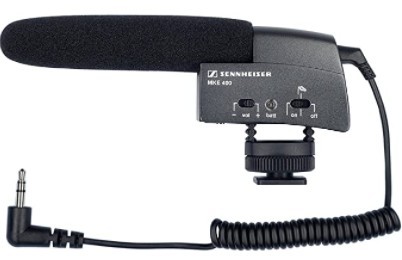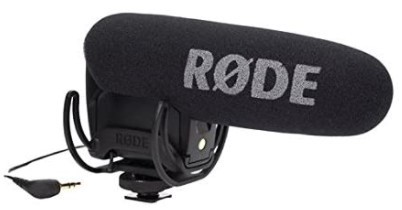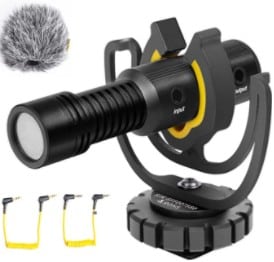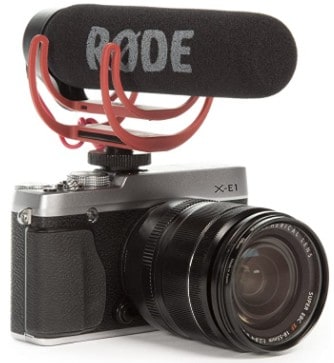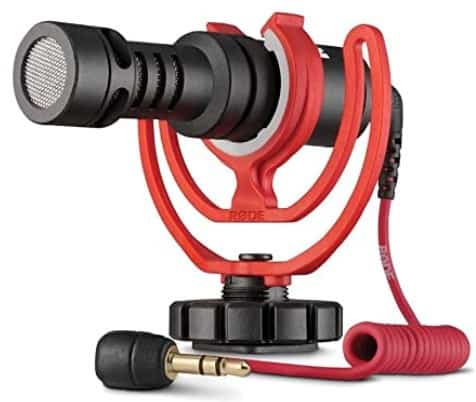"Huh. Not again! This audio sucks." These were the words of a vlogger friend of mine while listening to his latest podcast last week.
I asked him how he does his recording? He replied and said, "I turn my Nikon Z50 camera on and record with the internal mic."
Although he used the mirrorless, full-frame Nikon Z50, he couldn't get clear audio with the internal microphone.
Many Vloggers and YouTubers also experience this problem.
To solve this problem permanently, we will be going through the top five external microphones for Nikon Z50 with crisp sound. These mics are known to be the best microphones for the Nikon Z50 mirrorless camera.
5 Best Mics for Nikon Z50 with Crisp Audio
Sennheiser MKE 400 Shotgun Microphone
The maker of the Sennheiser mic has done a great job producing the MKE 400. It is built to detail- the shotgun mic is protected with an iron windshield to cut off noise.
The extra features you get with this mic include the low-cut filter button, the pre-amp gain control, headphone jack volume button, and a headphone output port. Vloggers are at liberty to adjust the audio setting to taste before recording.
It uses two batteries which last up to 100 hours.
The Sennheiser MKE 400 is a compact super-cardioid on-camera mic. It has off-axis noise isolation and records direct dialogue at a distance of about 3 to 6 feet. It is lightweight and mounts perfectly on Nikon cameras.
It is a good choice for YouTubers who want a versatile and portable microphone.
Pros
- It has a sturdy build and fits well on Nikon Z50.
- Direct headphone monitoring- even for high impedance headphones.
- Three input gain switches to adjust the audio for recording.
Cons
- The location of the power switch makes it vulnerable for users to unconsciously switch off the mic while recording.
- Since it runs on battery, you have to bear in mind to charge always and switch on/off before and after recording.
Rode VideoMic Pro
Speaking of build, the Rode VideoMicro Pro is superb to the Rode VideoMic Go.
When it comes to audio flexibility – Rode VideoMic Pro gives users the liberty to adjust the sound to taste. It features a high pass filter switch and a 3-level gain control switch.
The high pass filter switch helps to easily cut-off background noise like a car horn. While the gain control switch gives the user a prerecording audio boost or cut. The gain control for Nikon Z50 internal mic sucks, but with the Rode VideoMic Pro mounted on the Nikon Z50, you have nothing to worry about.
When put to a room test, the Rode VideoMic Pro offers better audio quality than the Rode VideoMic Go. In addition, the +20db gain help to capture a louder sound comfortably.
We all know clipping is wrong in an audio recording. With the safety channel switch, the Rode VideoMic Pro ensures the audio signal doesn't clip even when there are unexpected peaks.
It comes with the best-in-class Rycote Lyre shock mount and improves the existing Rode VideoMic windshield.
Pros
- You get cleaner sound recorded than the Rode VideoMic Go that operates on phantom power.
- It has more features than the Rode VideoMic Go. The Rode VideoMic Pro allows users to make audio settings.
Cons
- If you always forget to switch on your mic, using the Rode VideoMic Pro will be challenging because it operates on batteries.
- It does not fit a low-budget vlogger list.
Deity V-Mic D4 Mini Video Mic
Are you looking for a low-budget professional mic?
Here is the $50 Deity V-Mic D4 mic.
As one of the top external mics for Nikon Z50, it comes with a windshield and a high-quality shock mount. With about $50 spent on this microphone, you also get an extra audio jack that connects to your mobile phone. This means you can also record with your phone while using the camera.
The Deity D4 Mini is the only mic with an input port on this list. It allows for an auxiliary mic used together with the Deity D4.
We highly recommend this microphone for beginners who want to do more for a low price. If you need to record interviews; or dialogue with two separate mics, you get it done comfortably.
The V-mic helps you capture high-quality audio without the need for bulky gear. The cable management slot on the shock mount helps keep the audio cable in check and not bounce around.
Pros
- It allows users to use two microphones simultaneously.
- It is a budget-friendly mic.
- It is lightweight and does not add extra weight to the Nikon Z50 while in use.
Cons
- It doesn't have audio adjustment settings like the Rode VideoMic Pro.
- It records sound better only when up-close to the speaker.
Rode VideoMic Go
Rode VideoMic Go is a ready-to-go mic that operates on phantom power.
Many times, video makers complain of forgetting to charge their mic battery. With the Rode VideoMic Go such complaints do not exist. It does not need a battery to work. It comes packed with a mount adapter that helps reduce vibration that affects sound quality.
If you like to keep things simple without complication, the Rode VideoMic Go is all yours. It doesn't have complicated switches or settings.
When put to a room test, the Rode VideoMic Go produces a full spectrum sound more than the Rode VideoMicro. It reduces high pitches and makes the recording sound cool.
If you want to invest in great sound quality; crisp and full sound recording; the Rode VideoMic Go is the solution.
If you do multi-camera shoots, you can use the Rode VideoMic Go for reference audio.
Pros
- It captures ambient sound excellently.
Cons
- It doesn't come with a windshield.
- It is expensive for a beginner.
- The microphone extends extremely behind the Nikon Z50 – making the camera eyepiece difficult to use.
We recommend the Rode VideoMic Go if all you need is a mic to leave on the camera while you run around shooting.
Rode VideoMicro
It is another masterpiece from the maker of Rode microphones. It is much smaller than the Rode VideoMic Go.
It comes in a simple pack with a windshield, mic mount, an audio jack that connects it to Nikon Z50, and a user guide manual.
The Rode VideoMicro is user-friendly and can be easily mounted together following the guide.
The Rycote Lyre shock mount does not sag, wear out, or require repairing to maintain usage.
If you need to capture high-pitched sound, this is a better pick than the Rode VideoMic Go. And like the Rode VideoMic Go, it operates on phantom power.
If you are a beginner and need to spend on a low budget, we recommend the Rode VideoMicro. It gives value for money.
The Rode VideoMicro is a cardioid unidirectional microphone- that reduces auxiliary sound and focuses on the audio source in front of the camera.
Pros
- It is a good substitute for the Rode VideoMic Go at a smaller size.
- It is $40 lesser in price than Rode VideoMic Go.
Cons
- The high frequencies seem to overshadow other frequencies while recording in an open space.
- Finding a replacement for the audio cord when damaged is not easy.
Wrap up
Do you prioritize features? Or do you prioritize price? You'll observe these microphones are closely tied in comparison. The final decision is yours to make. However, to ease your selection, here are the three winning mics in this list.
- The third is the Deity V-Mic D4 Mini. It gives real value for a price of $50. It is our budget pick.
- The runner-up is the Rode VideoMic Pro. It is an improvement to the Rode Microphones. The improvements include the shock mount, the audio adjustment buttons, and the windshield.
- And the winner of the list is the Sennheiser MKE 400. It offers the same feature as the Rode VideoMic Pro but wins with the direct headphone monitoring feature.
Read Also: How to Earrape Mic? (Discord, Zoom) – Don't Miss this Guide


